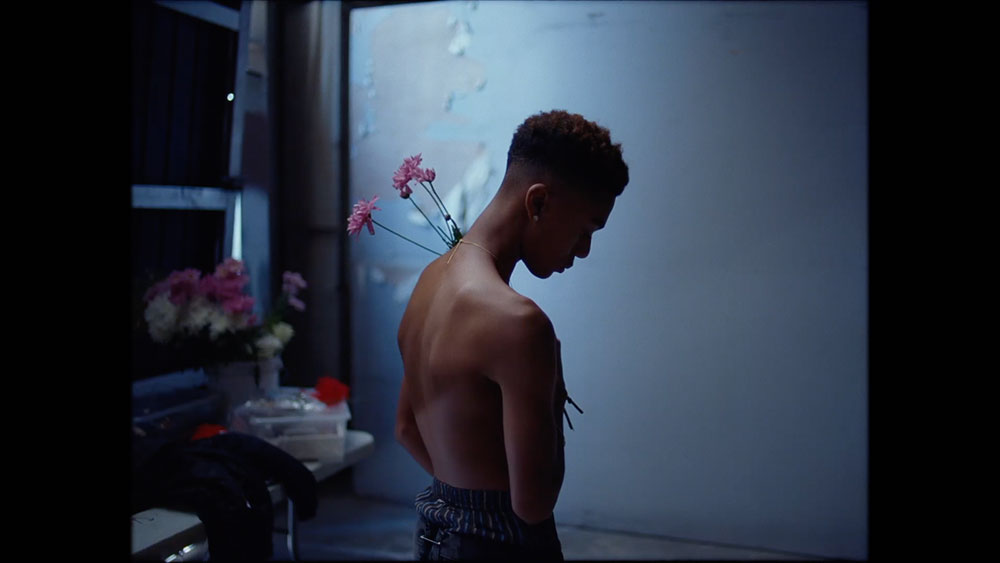The Spanish-born, Southern California-raised filmmaker AG Rojas has been making short-form creative and commercial work for the better part of fifteen years. He has made music videos most prominently. It was Rojas behind “Hey Jane,” the 10-minute Spiritualized video starring the drag queen Tyra Sanchez which lit up the indie blogs back in 2012. There existed in the late 20th century a fertile path blazed by the likes of David Fincher, F. Gary Gray, and Spike Jonze that led straight from music video-making to studio-backed feature directing. But the rise of networked, user-generated social media and the decline of cable television have revoked the cultural centrality the music video once had. This makes Rojas’s ascent through the ranks via collaborations with Gil Scott-Heron, Mitski, and Jamie xx—his visual sensibility always contending with and never just complementing their formidable aural signatures—all the more notable.
Rojas’s first independent film, Pare de Sufrir (2024), captures the filmmaker in a state of flux, still clinging to the sometimes cloying visual grammar of the music video but also reaching for—and sometimes grasping—a distinct mode of expression. The film’s title translates to Stop Suffering, or literally End of Suffering, and the 48-minute featurette alternates between a handheld naturalism and highly editorialized symbolism to depict the long, painful arc of a friendship. Julian Huckleby and Jason Newman nest under the canopy of trees lining a highway median as boys, trading jokes, a joint, and intense, wordless intimacy. The lush, boundaryless summers of youth are peeled away by the ceaseless progression of time. James William Blades’ instrumental score measures the gulf the years open between them—one lies like a cadaver on a cloth-covered plinth that floats variously in sea, space, and a factory where the other toils in silence.
The fricative and shambolic relations between men remain Rojas’s guiding obsession. Huckleby and Newman’s bodies structure his frame, as he pulls focus in sprawling wides, elongating the constriction of an office hallway or locker room. He employs the high-grain, high-contrast black-and-white format he first used in the music video for Kamasi Washington’s “Truth” to endow music video clichés—overt symbols presented with an almost precocious lack of context—with deeper spiritual dimensions. In one sequence, a man carries a heavy boulder on his back through a field, underlining his burden with each labored step. But Rojas lights the scene using feathered clouds of radiant white mist hovering behind the man and pervading the space overhead. Rendered in black and white, the startling mise-en-scène affirms a source of inspiration Rojas himself cited early on in his career: Roy Andersson. The industry that incubated Fincher, Jonze, and Gray hardly resembles the industry that Rojas is now hatching from, but Pare de Sufrir heralds a future career just as bright.
“This Long Century Presents: An Evening with AG Rojas” takes place this evening, March 9, at Metrograph. Director AG Rojas will be in attendance for a Q&A.



